This is Thailand. Chapter 9: Striptease in the bank. Part III
More or less from mid-March, Bangkok started to be a very unpleasant place. And this was nothing to do with the weather, but Thai politics, something a foreigner isn’t completely able to understand. It all started with the verdict of the Thai Supreme Court, which confiscated a huge portion of the weal of the ex-prime minister Thaksin Shinawatra.
Link to the previous part: This is Thailand. Chapter 9: Striptease in the bank. Part II.
Due to his populist policies, Shinawatra had become a very popular figure among Thai voters, the majority of which lived in the poorer, northern parts of the country. In 2006, he was removed from power by a military coup. The official reason was corruption but unofficially everybody knows that he lost support of the monarch, who had a very strong relationship with the armed forces. The coup “surprised” the Prime Minster when he was at a UN session in New York, so he could avoid being arrested. The country was taken over by the army, which eventually gave the country a new Prime Minister in the form of a pro-royalist group known as the “yellow shirts”. A huge portion of Shinawatra’s wealth was frozen and investigated by the authorities. In February, the court decided that the wealth was acquired illegally and should be returned to the country.
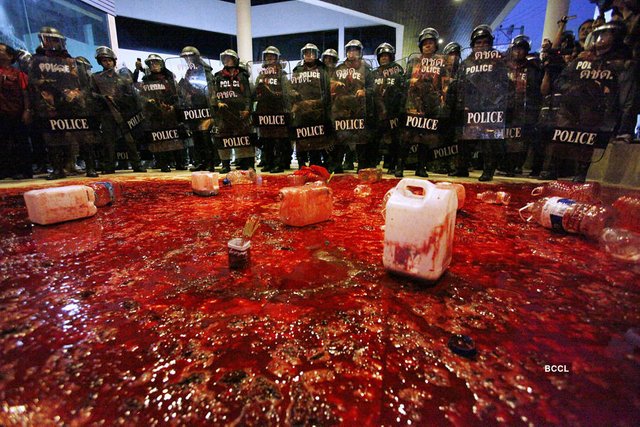
So called “red shirts” – supporters of Shinawatra – began their march for Bangkok. Literally. Tens of thousands of people dressed in red, occupied the Democracy Monument close to Khao San Road – a popular hangout spot among foreigners. The circus began in the media. The Red Shirts claimed that their blockade of the capital had nothing to do with the decision of the Supreme Court. They only wanted the current Prime Minister to step down and for new elections to be held. Their main argument was that the current Prime Minister was not democratically elected. They also claimed that, despite supporting Shinawatra, they were not mobilizing him and, despite his vast wealth, that he was not financing these protests. Obviously the protests had nothing to do with making way for Shinawatra to come back to rule the country again.
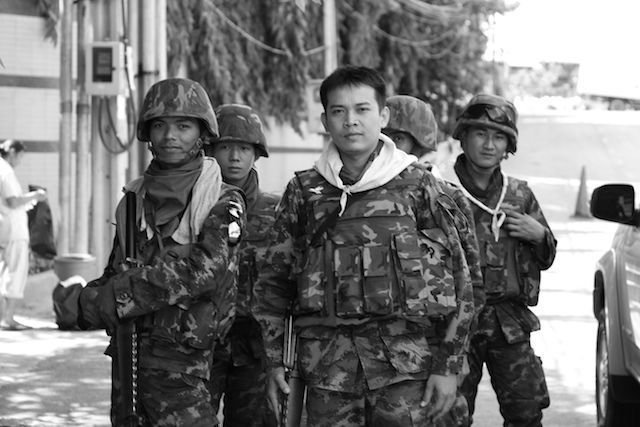
fot. Marek Lenarcik
On April 10, 2010 , the first tragedy happened in Bangkok. The shootout happened on the terrain occupied by the Red Shirts. The demonstrators accused the army or aggression, while the army accused the demonstrators. During the clashes, which lasted all night, at least a dozen people were killed and many more wounded. The demonstration spread to more strategic parts of the city, moving to the intersection of Silom Road and Thanon Rama 4, then to Central World shopping mall where we had celebrated the Gregorian New year. As soon the city moved to two of at least four city centres of Bangkok, the city became paralyzed. The traffic jams were bigger than usual and the most popular shopping malls were closed. The biggest streets and intersections in the city were blocked by demonstrators. Small clashes between the army and demonstrators became the norm. The statistics of the dead and wounded in Bangkok increased slowly every day.
The total apocalypse came in May. Everybody knew that something major was going to happen soon as the negotiations between the two parties led absolutely nowhere. Bangkok dwellers – not engaged in the conflict – began to voice their discontent and asked for normality to be brought back to the capital, even if it meant using force. Bangkok authorities switched off the skytrain and cut off electricity and water in occupied areas. The demonstrations lasted another week, after the protesters bought mobile electricity generators and managed to gain connection to water pipes used by embassies and hospitals.
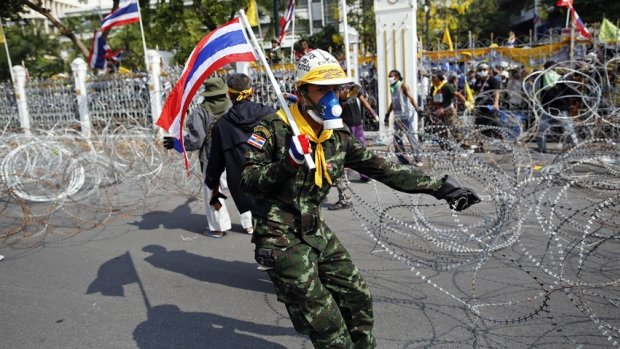
I sat in the college one morning, refreshing the news on the internet every five minutes. The newspapers and internet were full of shocking images. In one of them, the army was aiming at demonstrators with machine guns. In response, the demonstrators held their children above their heads. I had no sympathy for them. They had paralyzed my city for two months and living and working around the city had become much more difficult. And now the children in the photos? Do these people have sane minds?
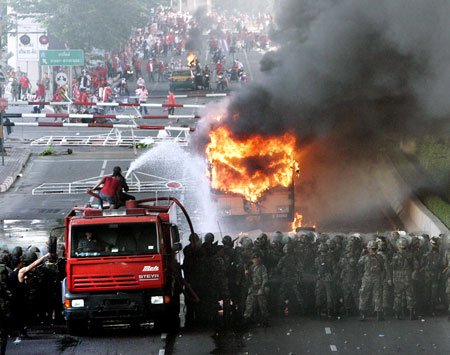
The army went in and eventually it was all over. The Red Shirt leaders announced that it is not worth losing a life, even if the case is noble. They announced that after the demonstration, they would hand themselves into the police as the whole occupation had been illegal from the very beginning. As much as I didn’t want to, I had to go to the class with my ex high-school students.
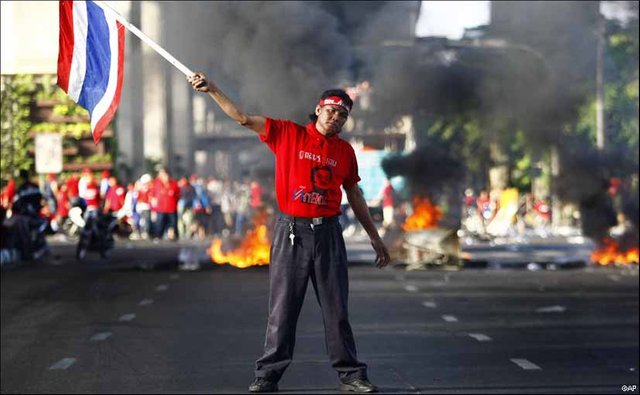
-Hello everyone, how are you today? - I began.
-Great ajarn Marek - the chorus replied.
-If you don’t know yet, I’m happy to inform you that the red shirt demonstration has finished. The leaders have surrendered. - I said without hiding my joy, the city would go back to normal again.
Silence and surprised faces responded. Either my students supported the red shirts, or I’d just made some sort of faux-pas. I opened the book to start the classes, when my telephone rang.
-Hi Marek, it’s Guy. Have you started class yet?
-Yes, why?
-Wrap it up. Trouble in central Bangkok. The government has declared a state of emergency and a night curfew. Order the students to go home and cancel classes until the end of the week.
-Got it, thanks. - I said, switching off the phone.
-Hey guys, listen up! - I got the attention of the students - Today’s classes are cancelled. You don’t have to come to college until the end of the week. The government has declared a curfew, get home before it gets dark.
-Huraaaaaay! - responded a chorus of enthusiastic kids.
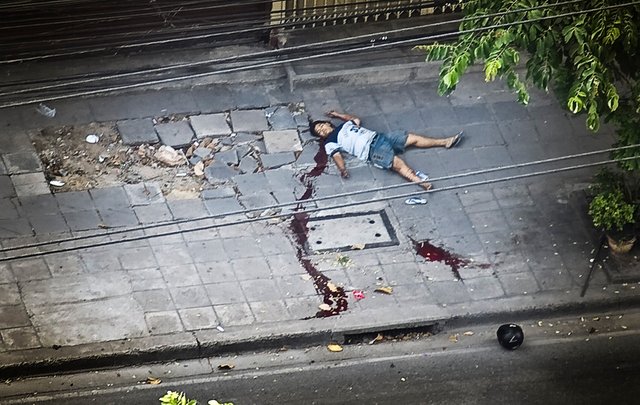
I came back to the office and glued myself to the monitor again. The crowd went mad. No one listened to the leaders and the demonstrators began to fight with the army and police. Dozens of buildings were set on fire. There was civil war in Bangkok.
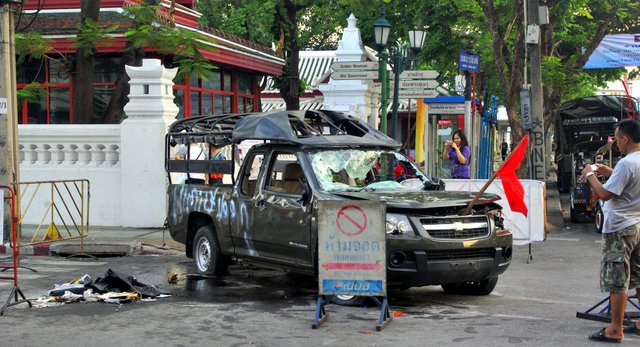
We checked that all of the students had left the college and went home ourselves. I called Piam to make sure she was safe. She was somewhere in the city and didn’t know what had happened. I asked her to come to me as soon as possible. While walking over the Srinakarin Road on the pedestrian bridge, I saw a lot of smoke over the central part of the city. Sixth sense told me to buy a few packs of water and stock on food that wasn’t prone to decomposition. The government blocked access to several news services and Facebook. I learned that regular fights were happening in the city centre. The army allegedly gave everyone the chance to evacuate. Everyone else they shot to kill.
The strict curfew lasted 48 hours. During this time, everybody had to stay home after 6pm, if you didn’t you could be arrested or shot without warning. My area was calm but even here, evening walks were off-limits. The drinking water I had bought came in handy as shops quickly began to run out of stock. Food stalls were open as normal until early afternoon but their selection was very limited. Piam lived with me for a few days and lied to her husband’s family that was visiting a friend on the other side of the Chao Phraya river and had no way of getting back. After a few days, everything went back to normal and I went for a walk in the city centre.
The Skytrain was not yet operating, so I caught a taxi and asked him to drive as close as possible to the centre. I saw Bangkok as I never had before. The streets were full of armed soldiers. The streets were empty of people and cars. There were tonnes of garbage everywhere – cardboards, t-shirts, flags, masts and burnt car tyres. The Central shopping Mall – where I had celebrated a memorable New Year – was burnt down in huge parts. Still smoking ruins were handed by firemen. Over a terrifying skeleton of a building that reminded me of the World Trade Center of September 11, there was a lot of smoke. But what moved me most was the eerie silence around the place. No cars and almost no pedestrians meant that I felt like I was not walking through a chaotic Asian city, but through a tropical forest of empty sky-scrapers. Like a scene from a surrealistic nightmare.
A few days later everything went back to normal. Bangkok’s dwellers mobilized themselves on the weekend under close supervision of the city services, who had done a great job of cleaning the city. Cars were back on the street and the Skytrain was, much to my relief, re-launched. Official statistics said that nearly 100 people were killed and hundreds were injured. The media began to wonder if the army had gone too far by shooting the demonstrators. Almost no one wanted to realize that if a similar demonstration had happened in China, the shootout would have happened on the first day. I couldn’t imagine that a similar, two-month blockade of the city would be allowed in New York, London or Berlin.
I had observed the protest from the beginning. Both the Prime Minister and the army gave the protestors time to end the demonstrations peacefully. There were so many final warnings that normal citizens of Bangkok began to grow tired of the government’s lack of action. Of course it’s always bad when a hundred people die in the name of badly understood politics, but I was happy that Bangkok was a normal city again, where I could enjoy life as I had before. It seemed that the majority of Bangkonians shared my view. I saw people thanking the army liberators by giving them flowers, food and drinks.
TO BE CONTINUED...